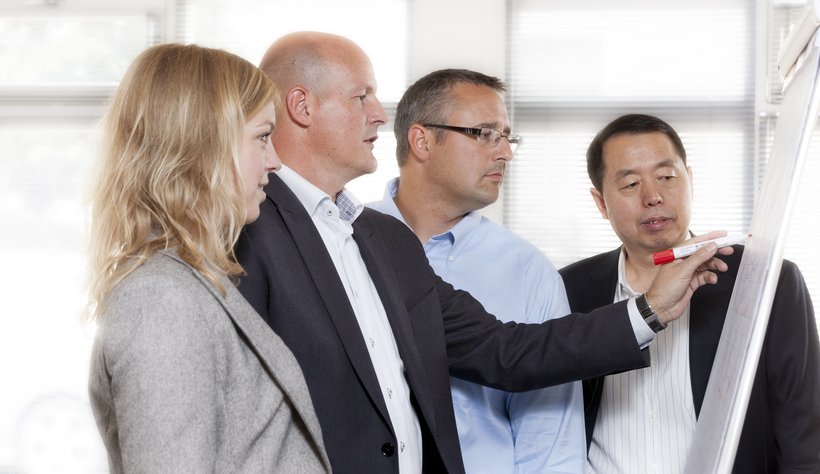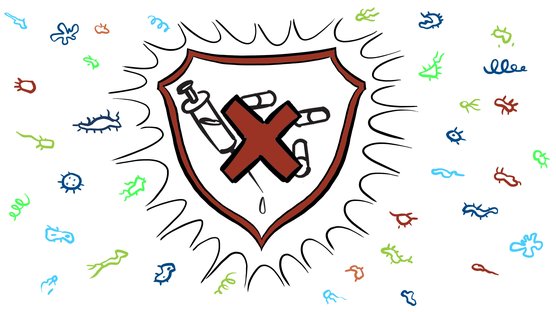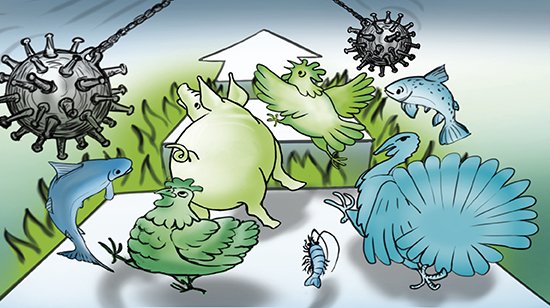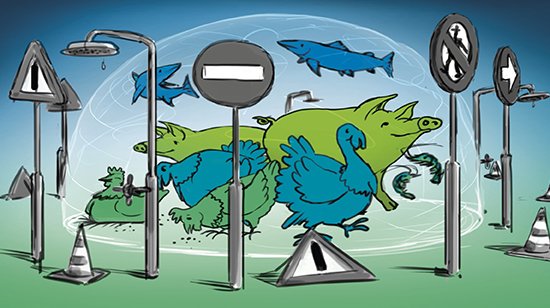
Published on March 31, 2020
Working towards a brighter future
Better Breeding Today for a Brighter Life Tomorrow is a powerful statement. Our core business focuses on improving animal breeding every day. We know how to measure and analyze data, to select the right animals, and combine the best of the best. One question still intrigues us: What about a brighter life for everyone?
Does a brighter life mean zero hunger? As the United Nations have stated within their Sustainable Development Goals. Does a brighter life mean increased focus on animal welfare? A subject that, is high on the agenda in many countries. Or does it mean enhanced economic value for animal protein producers worldwide? We see all these issues as part of a ‘protein puzzle’ that we feel we can help solve as a multi-species animal breeding company.
Our mission
We truly believe better animal breeding will ensure a brighter life. We breed better animals to help feed the world. And, we are proud of the work that we do. Hendrix Genetics is a very successful company that has grown from 50 to almost 3,500 employees in just 15 years. We asked ourselves and our stakeholders what our activities contribute on a broader scale. In the simplest terms, our mission is to: ‘Support the global food challenge with high-quality animal genetics’.
To try to meet the global food challenge, we need to understand the dynamics of global food markets to anticipate consumer needs. In a market with increasingly complex geo-political and disease pressures, and growing consumer demand for sustainable industry practices, it is important that sustainability remains a priority. We must ensure that our efforts to address global food challenges don’t negatively impact the resources and abilities of our own, and future generations.
What is the global food challenge?
The world’s population is expected to grow to 9.6 billion people by 2050. The majority of that growth (>90%) will take place in Asia and Africa. In addition to population growth, the world’s per capita animal protein consumption is also growing. Figuring out how to best feed all these people—while also advancing rural development, reducing greenhouse gas emissions, and protecting valuable ecosystems—is one of the greatest challenges of our era. However, we can’t just produce more food in the same way as today—we also must reduce the environmental impact of our food production systems.
Global food needs
The global food challenge is extremely complex. Basically, different regions experience varying challenges that require separate solutions. These can include:
- Increased demand for protein:
Multinational banking and financial services company, Rabobank, has projected an increase in global demand for protein consumption of 45% over the next 20 years. A large part of this demand will be driven by growth of the population in Asia and Africa.
- Improved diet through economic prosperity:
It is anticipated that increasing economic prosperity in South America and Asia will create new demand for diverse sources of animal protein from a variety of land-, ocean- and plant-based sources.
- Shifting demand:
While overall demand for protein is projected to increase, some markets are expected to decline, which could lead to supply and distribution challenges. Protein consumption in Europe is falling. Increasing numbers of North American consumers are also considering reducing meat in their diets.
- Feeding a growing global population:
The global population is projected to increase by 2 billion people by 2050. This is a dramatic increase of 25% within 30 years. Feeding a rapidly growing population will require improved efficiency and development of new processes in order to ensure that everyone has access to sufficient, affordable protein.
- Higher standards for producers and animal welfare:
All these challenges will need to be addressed against the backdrop of higher than ever standards for producers. Consumers are demanding protein raised with high standards of animal welfare, better animal health, and minimal carbon footprint.
How can we feed 9.6 billion people?
The varied issues involved in feeding a growing population and their infinite number of different contexts make our job as an animal breeding company challenging. As primary breeders we need to plan five years ahead. We can’t do that alone. And so we strive to collaborate across borders, companies and business units. Feeding 9.6 billion people will require collaboration throughout the entire value chain. It will demand the concerted efforts of many stakeholders on a worldwide scale. As Hendrix Genetics, we can provide high-quality animal genetics that form part of a solution to the global food challenge.
We are making a difference through:
- Finding new ways to analyze and select animals that are more efficient. Every new generation contributes to reduced use of feed resources, housing, and transport. This will help minimize carbon footprint while feeding the world’s population.
- Selecting and delivering high quality animal genetics for all parts of the world, to reduce poverty, hunger, climate change, and support a more sustainable animal protein chain.
- Boosting yields through better genetics, delivering more productivity. High quality animal genetics could have most benefit and the biggest impact in areas that currently have very limited and possibly impoverished genetic resources, such as, sub-Saharan Africa.
- Roughly a quarter of the world’s food is lost or wasted in its journey between farm and fork. We can also help alleviate the global food challenge through enhanced disease resilience of animals, increased food safety and security.
- As wild fish catches have plateaued, aquaculture has expanded. To grow in a sustainable way, aquaculture will need to produce more fish per unit of land and water. High quality genetics will contribute to achieving this.
Ensuring high quality in animal genetics
Achieving high quality is a matter of continuous improvement: On a daily, weekly, monthly and annual basis. We believe we can make significant progress by delivering high quality every step of the way. As everyone at our company contributes to this, we can make a big stride forward together. Through our breeding programs, for example, an improvement of even 1% has a major impact on the world’s food production.



